Windies of War: When Bulldogs great Steve Folkes brought rugby league grit to Caribbean cricket
Steve Folkes had a reputation as a hard-hitting defender for the Canterbury Bulldogs. That’s nothing compared to the shot he once put on Chris Gayle and the West Indies cricket team, writes BEN HORNE.
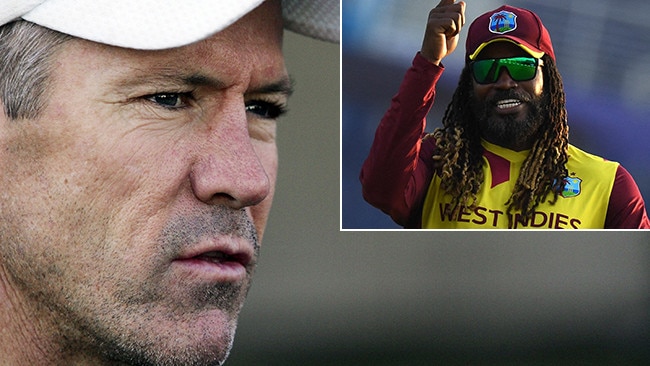
NRL
Don't miss out on the headlines from NRL. Followed categories will be added to My News.
Never mind the late Steve Folkes’ reputation as a hard-hitting defender for the Canterbury Bulldogs, it’s nothing compared to the shot he once put on Chris Gayle and the West Indies cricket team.
As the World Cup winds up in the Caribbean with hurricane Beryl, some 16 years later they’re still talking about the impact of renowned rugby league fitness fanatic, Cyclone Folkes – more feared than Glenn McGrath by many in the Windies.
This is the untold story about how Folkes, with no cricket background at all, was hired from nowhere to try and reinvigorate the embattled West Indies after being sacked as the NRL premiership-winning coach of the Bulldogs in 2008.
Folkes’ first tour with the Windies was to New Zealand a year later, and in his new role as strength and conditioning coach, he wasted no time giving the likes of Gayle, Dwayne Bravo, Marlon Samuels and Fidel Edwards a crash course in the ‘Dogs of War’.
It immediately put Folkes at odds with his superstar players, not that the hard-as-nails mentor was taking a backward step.
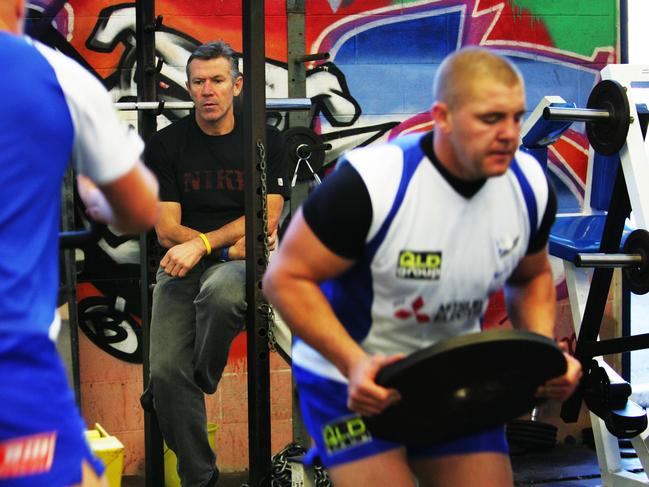
“I think what might have got him offside a little bit, or where some of the players realised this guy is serious, was because he talked about the best way to get over jet lag was to actually do some fitness,” Brendan Nash, former West Indian Test player, but born in Queensland recalls.
“We had arrived in New Zealand from the Caribbean and basically unpacked at the hotel, completely different time zone, and within four hours we were out running around.
“I think that probably set the tone for a lot of players to realise this guy is pretty serious.
“It wasn’t friction, but certainly some of the players were saying, ‘what’s going on here?’
“Definitely there was a few comments from some of the other guys that was almost like, ‘does this guy take a chill or anything like that, or is he just 100 per cent all the time?’”
Folkes tragically died in 2018 aged just 59, suffering a heart attack while riding an exercise bike.
As a player, Folkes defined Canterbury’s ‘Dogs of War’ era, starring for his club, state and country as a 90kg backrower who played above his weight perhaps more than any forward ever has.
Folkes then became the club’s longest-serving coach and led Canterbury to two grand finals, including the 2004 premiership triumph over a hot Sydney Roosters team.
Right up until his passing, Folkes was dedicated to fitness and would cycle long distances along the M7 motorway or down to Wollongong and back at a rapid pace.
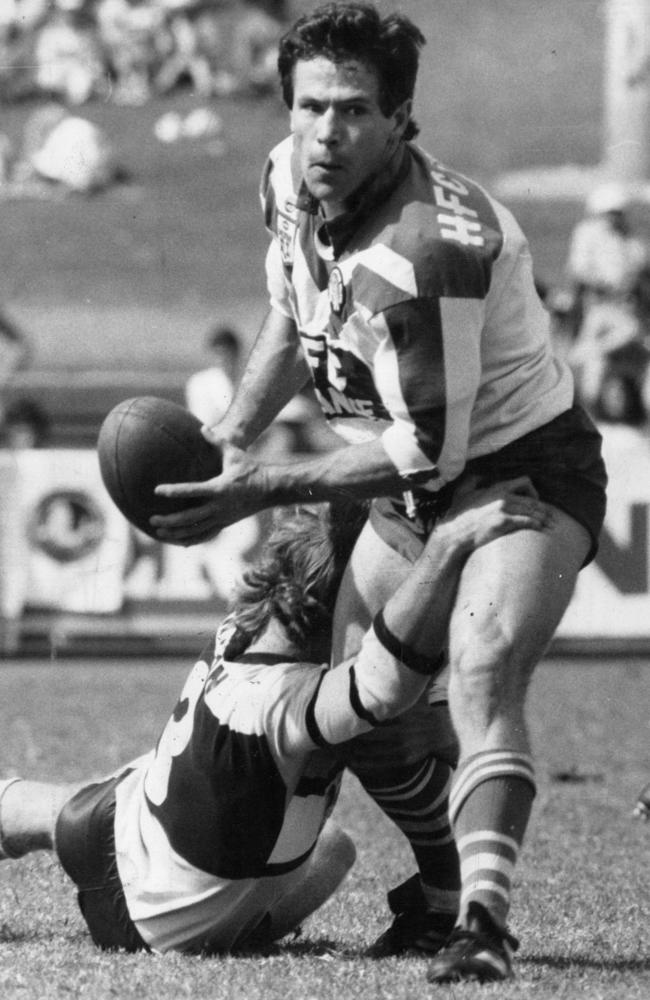
Nash was quite happy with the training regime set out by Folkes, having come out of the Queensland system where he trained with the likes of Andrew Symonds and was used to hard work.
But the idea of committing to proper physical training for cricket, did not exactly gel with the way some West Indies players approached the game.
Bulldogs players who went through pre-season training with Folkes might have shared some sympathy for the likes of Gayle and Bravo, but the Windies’ players weren’t necessarily shy about airing their disapproval.
Nash did his best to educate his teammates about Folkes’ pedigree as a sporting champion and legend of rugby league.
“I think from my memory of it, they did give it a go,” Nash said.
“I think they just complained a lot. I imagine in other professional outfits, you just kind of get on with it.
“If you complain it’d be to yourself or to a roommate or something like that. But it was pretty vocal when the coaches walked away.
“I guess different cultures. But Steve was brought in for a reason and I felt it was good … I remember him being quite firm, yes, but not over the top.
“Not like a drill sergeant.
“A lot of them didn’t really understand rugby league. Given we were in New Zealand I was trying to bring up video clips of the sport and show them, ‘he’s come from a really tough background and this is what they do,’ just to give them a little bit of perspective.
“I was relatively new myself so I was going ‘yeah, yeah I kind of agree with you, it’s a bit tough.’ I was trying to fit in myself.
“But in the back of my mind I was more than happy with what was going on for sure and being pushed like that.”
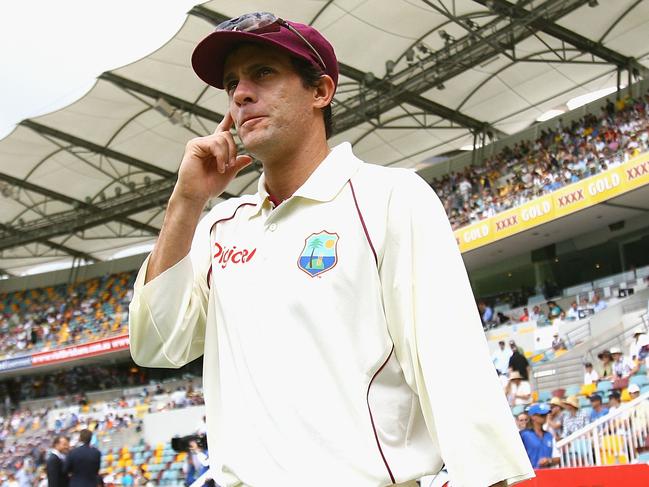
So how did a man who had spent the majority of his life as a player and coach at Canterbury, suddenly find himself in the world of international cricket?
Former Australian Test player John Dyson had taken on the job as West Indies coach and when he learnt that Folkes – an old mate from their high school teaching days – had been sacked by the Bulldogs, he was straight on the phone.
The West Indies were losing a lot of matches at that time, and with the onset of the Indian Premier League and the massive financial opportunities that brought some players, it was a destabilising period which threatened to tear Caribbean cricket apart.
Dyson was determined to set standards and promote a culture of hard work, commitment and desire.
Folkes was the right man for a difficult job.
“We were both PE teachers and in our early days of teaching at Caringbah High School, I would go off and play rep cricket and Steve would be employed to fill in for me,” Dyson said.
“When I went to the Windies we were looking for a strength and conditioner and I thought Steve was an ideal candidate.
“I used to see the West Indies as a bit of a difficult side to coach, but I thought all of those experiences Steve had at the Bulldogs and with his phys-ed background and his dedication to fitness, I thought that would help with the work at the Windies.
“It took a bit of consideration, but after a while, he said, ‘alright, I might like the opportunity,’ so he took it.
“I remember some of the looks on their faces when he said, ‘OK, this is what we’re doing.’ It was a look of disbelief. ‘What?’
“But there was gradual acceptance. He didn’t take a backward step which was good and I thought he was that sort of person who would be able to deal with the difficult guys.”
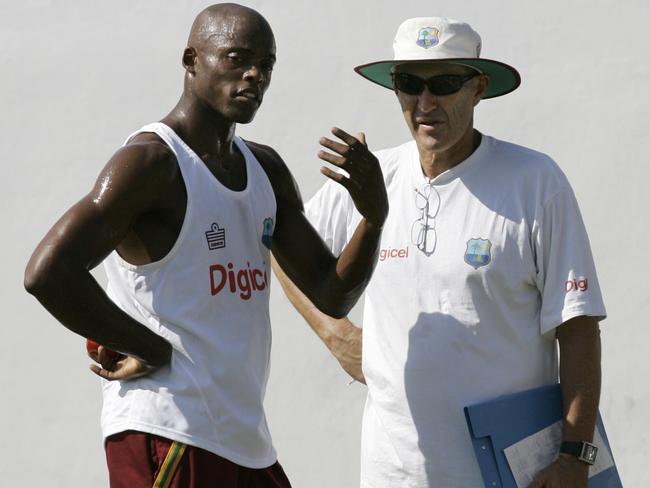
Folkes brought in a lot of sprint work, which wasn’t exactly the first-choice for the Universe Boss.
“Steve said compared to a football session, it was nowhere near it, but for a cricket session at that time, they weren’t used to that,” Dyson said.
“Chris was a fantastic player. He was a fantastic player. He had his ideas on how he should prepare and what he wanted to do to prepare and he took a bit of moulding, a little bit of encouragement to change just a little. But he was good.
“Once he got over that initial inertia, he had terrific speed, but it wasn’t one of his favoured activities.”
Folkes and Dyson also tried to introduce rugby league to the West Indies squad – with touch football warm-up matches at training taking place with limited success.
“We were trying to convert them over to touch rugby league, so that was a bit of a shock for them and they didn’t understand it,” Dyson recalls.
“After a while we accepted that there had to be a hybrid type game of touch footy and gridiron.”
Nash remembers how rugby league sessions might have been a step too far for West Indies players familiar with soccer and gridiron.
“It was quite interesting to try and explain, you’ve got to pass the ball backwards,” Nash said.
“They just assumed it was almost like we play on, even though you get touched, you just throw the ball forward or whatever.
“I think we had to slow it right down and really step us through how it works, but yeah, it definitely was met with mixed response, that’s for sure. I don’t remember it running too smoothly for the time we were trying to do it.”

Ultimately Folkes’ time at the West Indies was cut short by the player strike that rocked the team.
Dyson believes Folkes genuinely enjoyed his time in cricket as a career reset, but sensed he also craved a return to his first love, rugby league, which he eventually did as an assistant coach at St George Illawarra and coach of the Australian women’s team.
When Folkes’ suddenly died six years ago, Dyson lost one of his closest confidants.
“We used to meet up for coffee once the West Indies was over and have a chuckle about some things back then,” Dyson said.
“Because of his level of fitness and his dedication to fitness, I was really, really saddened and shocked to hear he had died like that.
“I felt that during his time, it was a relief to be away from football, but still be involved in sport. It was an eye opener for him and there was an elite group of sports people that didn’t share his views about physical training and all of that aspect of the game.
“But he also enjoyed cricket. He appreciated the skills of the players. I don’t think he totally enjoyed the touring side of things and being away from home.
“I enjoyed having him in the group. It was good to be able to talk to him about how he might have handled the football group and his difficulties there, and just his observations and little bits of input that made it a more enjoyable experience.
“He was dedicated to training and it was very sad that he passed away.”
More Coverage
Originally published as Windies of War: When Bulldogs great Steve Folkes brought rugby league grit to Caribbean cricket





